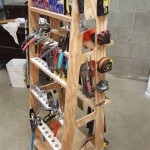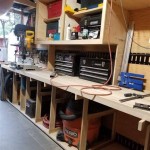How to Reset a Chamberlain Garage Door Opener Remote
Garage door opener remotes provide a convenient way to access one's garage. Chamberlain is a widely recognized brand in the garage door opener industry, known for its reliability and advanced features. However, like any electronic device, a Chamberlain garage door opener remote can occasionally experience issues that require resetting. Resetting a remote involves clearing its existing programming and re-syncing it with the garage door opener motor unit. This process is often necessary when the remote stops working, after replacing the remote battery, or when introducing a new remote to the system.
The Chamberlain garage door opener system relies on a rolling code technology. This technology enhances security by changing the access code each time the remote is used. When a remote loses synchronization with the motor unit, the rolling code sequence becomes misaligned, preventing the remote from activating the garage door. Resetting the remote and re-establishing the connection resolves this misalignment, restoring the remote's functionality.
Before initiating the reset procedure, it's crucial to ensure that the garage door opener motor unit is functioning correctly. Check the power supply and confirm that the safety sensors are properly aligned and free from obstructions. Misaligned or malfunctioning safety sensors can prevent the garage door from operating, leading to the mistaken belief that the remote is the problem. Resolving any underlying issues with the motor unit or safety sensors first can save time and effort during the remote reset process.
Identifying the Learn Button and Its Location
The primary method for resetting a Chamberlain garage door opener remote involves using the "Learn" button located on the garage door opener motor unit. This button is typically a square or round button, and its color can vary depending on the model. Common colors include yellow, red, orange, green, and purple. The color of the "Learn" button indicates the type of security system the opener uses, but the reset procedure remains similar regardless of the color.
The "Learn" button is found on the motor unit itself, which is usually mounted on the ceiling of the garage. The exact location of the button can vary depending on the model. In some models, it is located on the back panel of the motor unit, while in others, it is found beneath the light cover. Consulting the owner's manual for the specific model can help locate the “Learn” button quickly. The manual typically provides a diagram illustrating the motor unit and identifying the location of key components, including the "Learn" button.
It is important to note that some older Chamberlain garage door openers may not have a "Learn" button. In these cases, alternative methods may be required to reset the remote, such as using a series of button presses on the remote itself or consulting a professional technician. However, the vast majority of modern Chamberlain openers use the "Learn" button as the primary method for programming and resetting remotes.
Once the "Learn" button is located, it is essential to ensure it is easily accessible. If the motor unit is mounted high on the ceiling, a stepladder may be necessary to reach the button safely. Exercising caution when using a stepladder is crucial to prevent falls and injuries. Having another person assist with the process can further enhance safety. Prior to proceeding, inspect the "Learn" button to ensure it is clean and free from any debris that could prevent proper function.
The Reset and Programming Sequence
The reset and programming sequence involves a specific series of steps that must be followed precisely. The general procedure is as follows: Begin by pressing and releasing the "Learn" button on the garage door opener motor unit. Once the button is pressed, the indicator light near the button will typically illuminate or flash, indicating that the motor unit is in learning mode. This learning mode typically lasts for a limited time, usually around 30 seconds.
Within this 30-second window, take the remote that is to be programmed and press the button that is to be used to control the garage door. Hold the button down for a few seconds, then release it. The garage door opener motor unit should respond by either clicking, or the garage door may begin to move slightly. This indicates that the remote has been successfully programmed.
If the garage door does not respond, repeat the process of pressing and releasing the "Learn" button and then pressing the remote button. In some cases, it may be necessary to press the remote button multiple times to establish a connection. Allow a brief pause between each press.
After the garage door opener responds to the remote, test the remote by pressing the button again. The garage door should now open or close completely. If the door operates as expected, the remote has been successfully programmed. If the door still does not respond, double-check that all steps were followed correctly and repeat the entire process. It is also advisable to check the remote's battery to ensure it has sufficient power. A weak battery can sometimes prevent the remote from transmitting a signal effectively.
For remotes with multiple buttons, each button can be programmed to control a different garage door opener or gate. Repeat the above steps for each button that needs to be programmed, using the appropriate garage door opener motor unit each time. Keep a record of which button controls which door or gate to avoid confusion later on.
Troubleshooting Common Issues
Despite following the reset and programming procedure correctly, some users may encounter issues. One common problem is the remote not programming to the garage door opener. If this occurs, first confirm that the "Learn" button was pressed correctly and that the indicator light is illuminated. If the light does not illuminate, the "Learn" button may be faulty, or the motor unit may have a power issue. Consult a qualified technician to diagnose and repair the motor unit if necessary.
Another potential issue is interference from other devices. Radio frequency (RF) interference can disrupt the signal between the remote and the motor unit. Common sources of RF interference include other garage door openers, wireless routers, and certain types of lighting. Try moving the remote closer to the motor unit when programming it to minimize the effects of interference. Also, ensure that the antenna on the motor unit is fully extended and free from obstructions.
If the remote programs successfully but then stops working after a short period, the issue may be related to the remote's battery. Replace the battery with a new one of the correct type and try programming the remote again. Additionally, inspect the battery contacts inside the remote to ensure they are clean and making good contact with the battery. Corrosion on the battery contacts can impede the flow of electricity.
In some cases, the garage door opener motor unit may have a limit on the number of remotes that can be programmed. If the maximum number of remotes has been reached, it may be necessary to clear the existing programming from the motor unit before adding new remotes. Consult the owner's manual for instructions on how to clear the memory of the motor unit. Alternatively, consider using a universal remote that can be programmed to control multiple garage door openers.
If all troubleshooting steps fail, it may be necessary to contact a professional garage door technician. A technician can diagnose the problem and provide appropriate solutions, such as repairing or replacing the remote or motor unit. Technicians have specialized tools and knowledge to address complex issues that may be beyond the scope of a typical user.
Regular maintenance of the garage door opener system can help prevent future issues. Inspect the safety sensors regularly to ensure they are aligned and functioning properly. Lubricate the moving parts of the garage door and opener mechanism to keep them operating smoothly. Replace the remote batteries periodically, even if they are not completely depleted, to prevent unexpected failures. By following these maintenance tips, the reliability and longevity of the garage door opener system can be improved.
Furthermore, keeping the remote clean and free from damage can extend its lifespan. Avoid exposing the remote to extreme temperatures, moisture, or direct sunlight. Clean the remote periodically with a soft, dry cloth to remove dirt and debris. Store the remote in a safe place when not in use to prevent accidental damage.
Understanding the functionality of the Chamberlain garage door opener system and the troubleshooting steps outlined above can empower users to resolve common remote-related issues effectively. By following the recommended procedures and seeking professional assistance when needed, the convenience and security of a properly functioning garage door opener system can be maintained.

How To Reset Remote Keypad Access Pin On Chamberlain Liftmaster Craftsman Garage Door Opener Delete

Garage Door Remote Not Working 5 Most Common Reasons Why

How To Program A Remote For Chamberlain Liftmaster Craftsman Garage Door Opener Setup Process

Garage Door Opener Universal Remote Easy How To Program

How To Reset A Liftmaster Garage Door Opener Quickly

How To Program Chamberlain Universal Mini Remote Control

Programming A Chamberlain Garage Door Opener Easy Steps

Garage Door Remote Control Not Working Program Battery Reset

Programming A Chamberlain Garage Door Opener Easy Steps

How To Reset Garage Door Remote A Step By Guide
Related Posts








